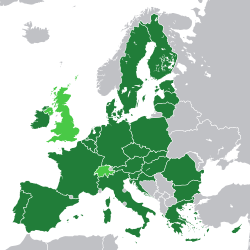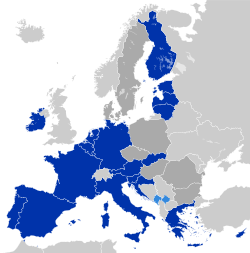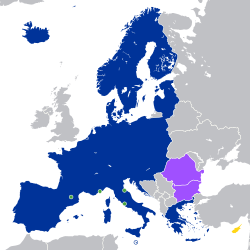Role and benefits
The role of Vice-President of the European Commission may be bestowed on any European Commissioner in addition to their existing portfolio. Vice-Presidents are appointed by the President of the European Commission and confirmed by the European Parliament. [1]
Since the 2009 Lisbon Treaty, the High Representative of the Union for Foreign Affairs and Security Policy is automatically and permanently one of the Vice-Presidents by virtue of their position as High Representative (commonly referred to as the 'HR/VP' role). This means they are not appointed as Vice-President as such, and the appointment procedure to the position of High Representative is different from that of the Commissioners.
Commission salaries are set as a percentage of the top civil service grade. Vice-Presidents are paid at 125% (€22,122.10 monthly), in comparison to 112.5% (€19,909.89) for normal Commissioners and 138% (€24,422.80) for the President. [2] [3] However, the vice-president who also serves as the High Representative is paid at 130% (€23,006.98). [4] There are further allowances on top of these figures. [2]
Executive Vice-President
The von der Leyen Commission established a new position of Executive Vice-President. There are three Executive Vice-Presidents, each appointed from one of the three largest political groups in the European Parliament. In addition to their 'regular' role as Commissioner, they also manage a broader and horizontal policy area involving the coordination of multiple Commissioners. Unlike the other Vice-Presidents, Executive Vice-Presidents are assigned a specific Directorate-General under their authority for this part of their job and their policy areas are considered the top priorities of the incumbent European Commission. [5] [6]
Between 2004 and 2019, the position of First Vice-President existed instead. The main role of this position was that of a vice president in the narrow sense: taking over from the President in their absence. The position was established under the Barroso I Commission in 2004, with its first occupant being Margot Wallström. She was succeeded in the second Barroso Commission by Catherine Ashton who was also the High Representative of the Union for Foreign Affairs and Security Policy. The last First Vice-President was Frans Timmermans as part of the Juncker Commission, who subsequently became one of three Executive Vice-Presidents in 2019.
This page is based on this
Wikipedia article Text is available under the
CC BY-SA 4.0 license; additional terms may apply.
Images, videos and audio are available under their respective licenses.




